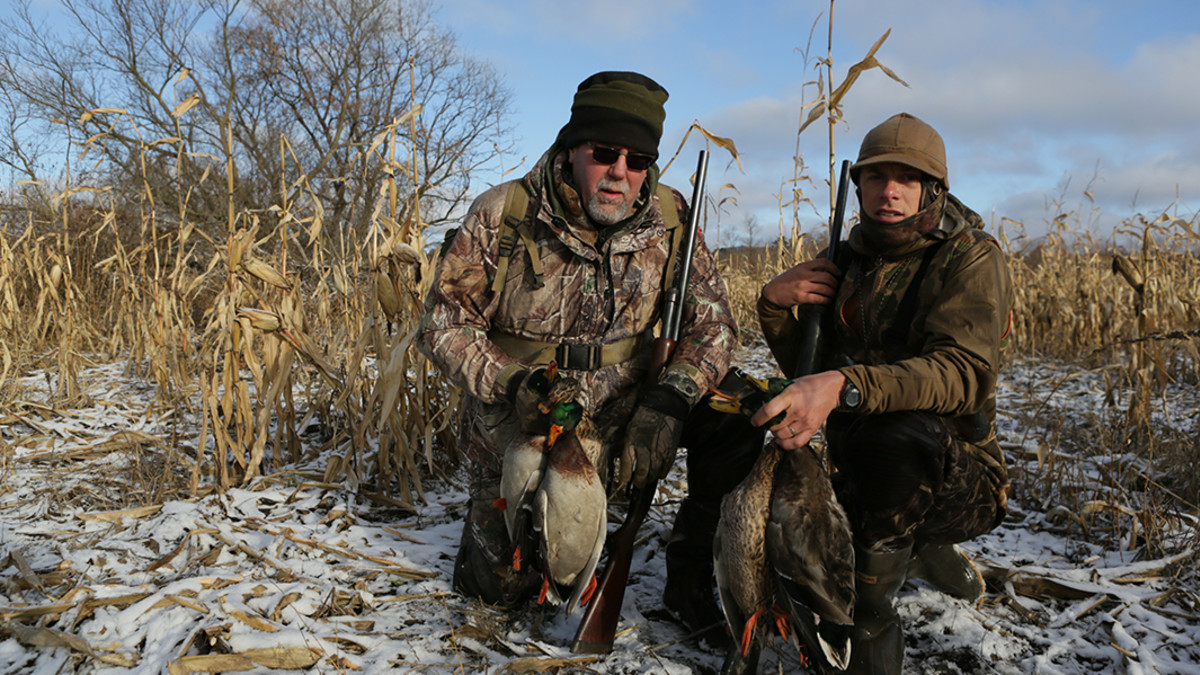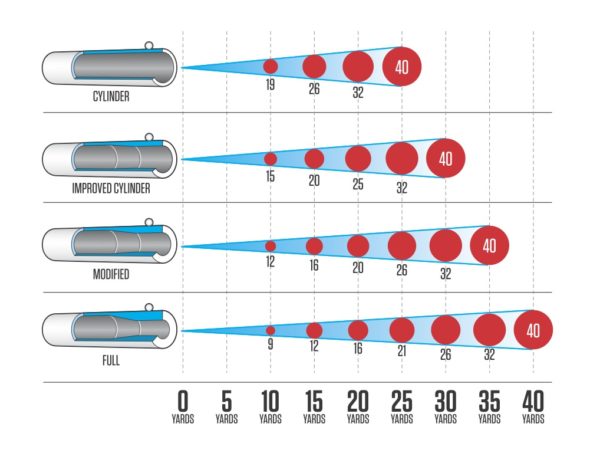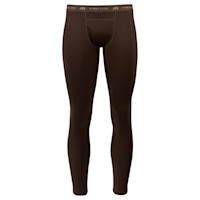
Barrel length, choke and chambers for hunting shotguns are three subjects that any aspiring small game hunter should want to know about. These three things will change significantly depending on the game that you are pursuing. The setup of the barrel length, choke and chambers will change greatly between pursuits.
Barrels
A term of obvious definition, barrel length refers to the length of the shotgun’s barrel. In general, a longer barrel allows the projectiles to harness more energy from the explosion of the gunpowder and to fall into a truer flight path.
20″-24″ barrels: These short barrels are best left to turkey hunters, who are taking careful aim at standing-still birds. They are generally too short for wingshooting, as accuracy suffers. However, many rabbit and grouse hunters who spend their time in extremely thick cover will tout the benefit of a short barrel that doesn’t get hung up in the brush.
26″-28″ barrels: These are standard barrel lengths that can be used for all shotgun applications, ranging from wing shooting to slug hunting. While a 26” barrel is lighter and more maneuverable, a 28” barrel is going to be more accurate for long-range shots and should be regarded as perhaps the best all-around barrel length. Keep in mind that choke selection can mitigate the inherent differences between 26” and 28” barrels. That is, a 26” barrel with a full choke will shoot a tighter grouping than a 28” barrel with an improved cylinder choke. See below for detailed information about chokes.
30″-32″ barrels: These longer barrels certainly have their devotees, who use them for all shotgunning applications. However, they are most commonly favored by waterfowl hunters who do a lot of long-range pass-shooting at waterfowl.
Chokes
A shotgun’s choke is a tapered restriction in the muzzle end of the bore. This results in a wider or narrower shot pattern, or “spread” of pellets, as the shot travels down range. A tightly constricted choke yields a tighter pattern; that is, it concentrates the shot into an overall impact zone of smaller diameter that you’d get from a more open choke at equal distances. There are five common chokes used by hunters, they are as follows.
- Improved Cylinder: Highly versatile choke, used for upland birds, small furred game, and waterfowl. (Safe for slugs.)
- Modified: A general-use choke, used for upland birds, small furred game, and for short- to mid-range waterfowl shooting. (Safe for slugs.)
- Improved Modified: Mid-range upland bird and waterfowl shooting. (Not safe for slugs.)
- Full: The most common highly compressed choke. Used for long-range upland and waterfowl shooting. Also good for turkeys. (Not safe for slugs.)
- Extra Full: A highly compressed coke used for specific applications on turkeys and long-range waterfowl shooting. (Not safe for slugs.)
The type of choke you should use depends on the type of hunting that you’re doing. The tightly restricted “extra-full” choke that enables you to put an overwhelmingly lethal dose of pellets into the small head of a turkey at sixty yards would be a major handicap when gunning for fast-moving cottontail rabbits in the tight confines of a briar patch. Not only would you miss most of your shots, at ten yards, your pattern is no bigger than a baseball. A direct hit at this distance would destroy the bulk of the animal’s meat.
If you’re shopping for a truly versatile shotgun, it’s wise to select a shotgun with screw-in chokes. This makes it a simple matter to change from one choke to the next, something that can be done easily in the field. And you can buy extra chokes for a fraction of what it costs to buy a new gun. Screw-in chokes are not universal; you need to match chokes to the specific ones designed to fit your gun.
Many older shotguns, however, have either fixed or adjustable chokes. A fixed choke is just that, it cannot be adjusted or unscrewed. Double barrel and side-by-side shotguns with fixed chokes will usually have a different sized choke for each barrel, say a modified choke and a full choke, in order to enhance their versatility. Adjustable-choke shotguns can be adjusted by tightening or loosening a fitting on the end of the barrel. While this style of choke was popular in past decades, it has fallen out of favor with hunters for a number of good reasons and is rapidly becoming a thing of the past.
A good way to understand shotgun chokes is to consider the average percentage of lead pellets from a shotshell that each choke will deliver into a 30” circle at 40 yards.
- Extra-full: +/- 75%
- Full: +/- 70%
- Modified: +/- 60%
- Improved Cylinder: +/- 50%
Chambers
There are three common chamber lengths for shotguns: 2 3/4″, 3″, and 3 1/2″. Most modern shotguns are built to accept both 2 ¾” and 3”, and many will accept 3 ½” as well. As a general rule of thumb, 2 ¾” shells are perfectly suitable for all applications up to geese and turkey. And while you can certainly use 2 ¾” shells for geese and turkey as well, most hunters prefer to jump to a 3” shell for these larger birds in order to get a little extra oomph from their shotgun. As for 3 ½” shells, you just have to decide how much abuse your shoulder can take. They give you a few extra pellets and perhaps a tad bit of extra range, sure, but it’s debatable whether or not the advantages outweigh the extra cost, recoil, and risk of jamming.






